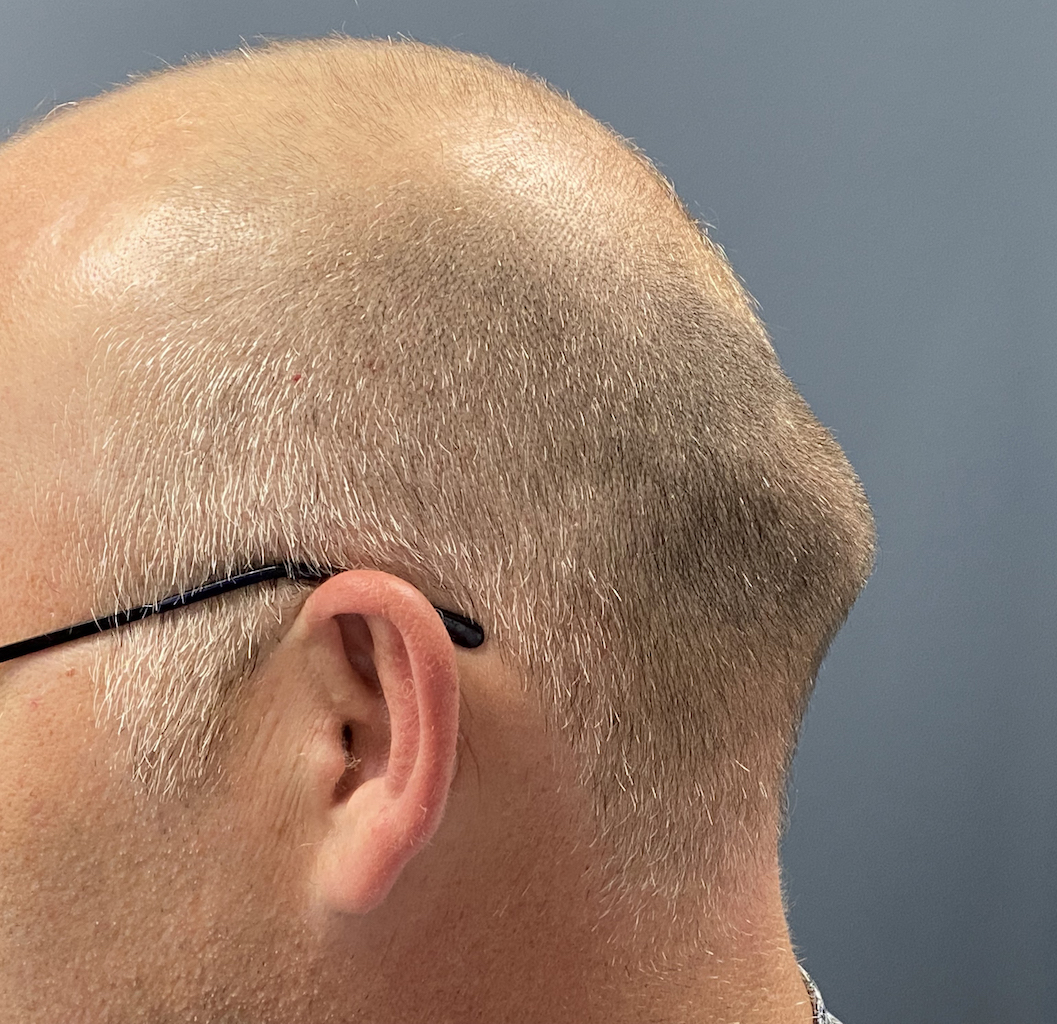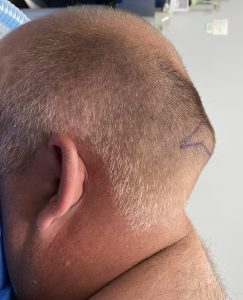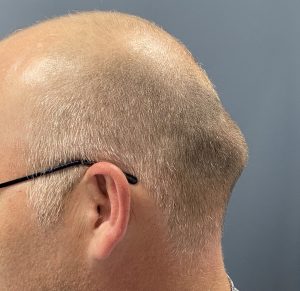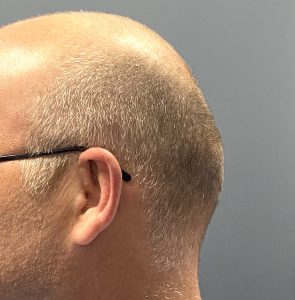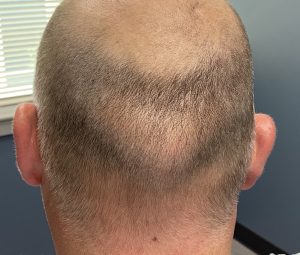Background: The shape of the skull is typically perceived as a smooth curved on all sides. And this is relatively accurate with the exception of the front and back of the head. In men the inferior part of the forehead will have some degree of brow bone prominence on the lower due the developmental the frontal sinuses. (women had smaller frontal sinuses and thus often no visible brow bones) While the back of the head is often also smooth for both men and women, men can have various protrusions on its over end due to the stronger pull of the attached neck muscles. (women rarely have such protrusions due to less neck muscle)
The most common occipital skull protrusions are the central occipital knob, the lateral nuchal edges that run along the bottom of the visible occipital bone and the entire occipital bone itself. In the larger occipital knob formations it is not uncommon that prominent nuchal ridges develop from it and extend laterally. These combined bony protrusion will have the shape of gull or bat wings since the nuchal ridges are not usually straight lines. In my experience such protrusions can appear in two types of men, the larger male with a thicker neck and a thinner male with a thin scalp cover. The former is due to a true bony over development from the strong neck muscles. The latter is due to a thin scalp in which all bony prominences, even if small, are visible.
Regardless of the origin, such occipital protrusions can be reduced/eliminated by a bone burring method. Such bony protrusions are quite thick and are usually the thickest part of the skull. Major occipital bone reductions can be safely done.
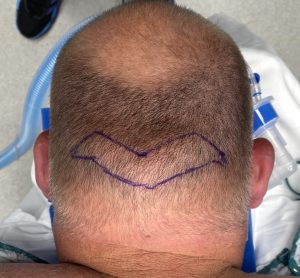
Under general anesthesia and in the prone position a small scalp incision was made over the knob portion of the protrusion. The occipital knob was dissected off of the bone and out onto the nuchal ridges on each side. An initial deep bony cut with a high speed drill and burr was made 12mms vertically through the knob to establish the depth of the desired reduction. Then the reduction was extended out on each side of the depth cut removing bone in a tapering fashion out in the end of the raised nuchal ridges.
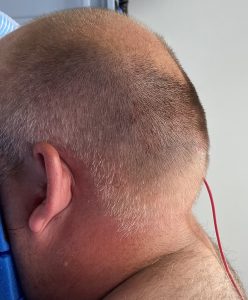
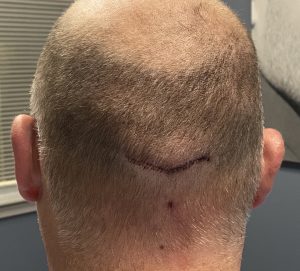
While the ‘price’ for reducing such a skull prominence is a small scalp scar, such scalp scars heal remarkably well and rarely does a patient ever request a need for a secondary scar revision.
Case Highlights:
1) Large occipital knobs are often associated with prominent nuchal ridges which typically occur in men with thicker neck muscle/tissues.
2) Reduction of the combined occipital knob-nuchal ridge protrusions can be effectively reduced by a bone burring technique done through a small overlying incision.
3) The recovery from such skull reductions is very rapid with no postoperative restrictions.
Dr. Barry Eppley
World Renowned Plastic Surgeon

